Family Castle: Český Šternberk
Castle Cesky Sternberk.
There is one more circumstance that distinguishes this castle among others. They live in it. And not anyone, but modern and prosperous descendants of the ancient Sternberg family. And therein lies its uniqueness. There are not so many ancient castles left in the world, within the walls of which the same genus lives, beginning with its founder, Zdeslav Divishovac. And for the Sternberkov family, this is both the home and the source of their existence. The castle arranged paid excursions, and the premises are rented for weddings and scientific conferences!
Castle Cesky Sternberk. On the river you can swim in a canoe ...
Interestingly, Cesky-Sternberk was built in 1241 year, that is, in the year of the defeat of the Polish-German army in the battle with the Mongols at Legnica. Then he was erected on this very spot by order of Zdeslav Divishovts, and his name was “The Pearl of Posazava”. After that, representatives of the Divishovtsev family, following the example of many Czech aristocrats, decided to change their surname to German style. Their coat of arms was a blue shield depicting a hill surmounted by a gold star, which gave them grounds to be called Sternberks, because the star means “Stern” in German, and the hill means “berg”. The emblem of the emblem was appropriate: "We will never go out!". So it is not surprising that this is one of the most ancient clans of the Czech Republic, as well as their castle itself, numbering seven and a half centuries! Initially, the castle was built in the Gothic style, near the town of Benes. Moreover, when there is a flood or heavy rains, the water in the river rises so high that it approaches the very foundation of the castle, which only adds to its inaccessibility.
South Bastion
However, there are no absolutely impregnable castles and fortresses, which, by the way, was proved by the example of this same castle of the Hussite wars. At that time, Pan Zdenek Konopishtsky of Sternber, who owned them, was an opponent of King George of Podebrady and openly opposed him. For this, his castle was besieged by royal troops and looted in 1467. After that, in the 1480 year, in order to prevent such a disaster from recurring in the future, its new owners built a new high tower at the entrance to it. This strengthened the castle from the military side, but could not prevent its deterioration. He had to be repaired, and as the architectural fashion changed, like any other, then Baroque features appeared in the castle from 1693, and in 1886, the architect from Vienna K. Kaiser added elements of romanticism to him.
Sternberk Castle by Karl Wolf 1817
Family emblem.
First of all, around the castle in 1907, in just a couple of years, a beautiful park was established. And although during the Second World War, he still suffered a little, he was quickly restored and opened to the public in 1947. All the years while the Czech Republic was Czechoslovakia, the castle belonged to the state. But in 1992, he was returned to representatives of the Sternberk family. This is quite a rare case when the Czech government returned the property to its former rightful owner. The fact is that when, after the “velvet revolution” of the 1990s in the Czech Republic, a law on denationalization was adopted, a clause was inserted into it that it was possible, yes, but ... only if the former owners of this property did not cooperate with German -fascist occupiers. An important clarification, right? Because there were many. Especially among wealthy people. But now Prince Sternberg did not accept the offer of cooperation with the Germans. Moreover, in many sources it is reported that he “lowered the Gestapo officer who came to his castle from the stairs,” and he armed his servants and went with them to the mountains, where the partisan warfare had been partisan. Most interesting is that when the Czech Republic was liberated by the Soviet troops, the prince was imprisoned - well, the prince, a socially alien element, “peace to the huts — war to the palaces!”
Bastions and castle buildings are impressive!
View from the castle to the river.
As for the castle fortifications, in its southern part the bastion of Gladomorna, dating back to the late Gothic epoch, is preserved. In the XIV century, Peter Szolnberk began to build it, but he didn’t manage to finish it, so Jan Sternberk, his son, finished building it. After the castle was nevertheless taken in 1467, it was decided to fortify the southern part with additional structures. Put the tower, inside which is a spiral staircase. In the wall, however, many holes are made through which fire can be fired. So to approach her was not easy. A horseshoe-shaped shaft was poured around the bastion, but it was not very well preserved from time to time. But all this can be seen outside. But what is hidden inside the castle walls? Oh, there is also very, very interesting!
Interior of the “Knight's Hall”
Fireplaces and portraits of the Knight's Hall
To visit openly as many as fifteen absolutely luxurious rooms and rooms. First of all, tourists get into a large "Knight's Hall" (the most spacious in the castle), where huge portraits of representatives of the family, dressed in armor of the era of Thirty Years War, hang on the walls, each of which has its coat of arms. The hall is decorated with fireplaces and huge, weighing in 300 kg, Bohemian glass chandeliers. Then the route goes to the chapel of St. Sebastian and the Yellow Salon, decorated with frescoes of the Baroque era and you can even sit down on furniture from the times of Louis XIV. Then there is the Ladies' Salon and a large library in which several thousand sometimes quite unique books are kept, and the walls are decorated with works of the Czech painter Peter Jan Bradl. This is followed by a tour of the Dining Room, where there is a collection of family portraits of the Sternberk family, as well as family-owned silver utensils (remember how in every Dickens novel, servants polish the family silver ?!).
Cabinet with family tree from modernity to the past.
Hunting salon.
Hunting trophies.
Next comes the Oriental-style lobby and breakfast room, which features a collection of silver figurines. The family tree of the Sternberk family is located in the office of Jiri Sternberk. On it on 63 portrait images, six generations of the Sternberk family can be traced. Sociologists believe that the century is the life of three generations. So there are portraits of people two hundred years ago, but since the life expectancy was earlier than today (even among the nobility!), This time in the 2,5 century, no less! The following four halls are decorated in various styles - from rococo to baroque. The next room will not leave indifferent men, because there are placed trophies, obtained during the hunt Sternberkov. The tour of the castle ends on the main staircase, where the battle canvas of Philip Sternberk hangs, that is, the people in the family had various talents.
Chapel.
There are plenty of collections available for inspection, of course, because this is an excursion, but a collection of 545 (!) Copper engravings devoted to the events of the Thirty Years War is presented by Jiri Sternberk. There is a unique Gothic stone statuette - a relic of the genus, dating from the XIV century in the chapel. In general, the castle is just full of all kinds of old weapons, baroque furniture, stained glass windows, old watches and paintings by Italian and Dutch masters of the XVII - XVIII centuries. Very effective natural leather wallpaper, very similar to the wallpaper in the castle Hluboka. There is a valuable collection of pipes, although Philip Sternberk, who collected them, did not smoke himself!
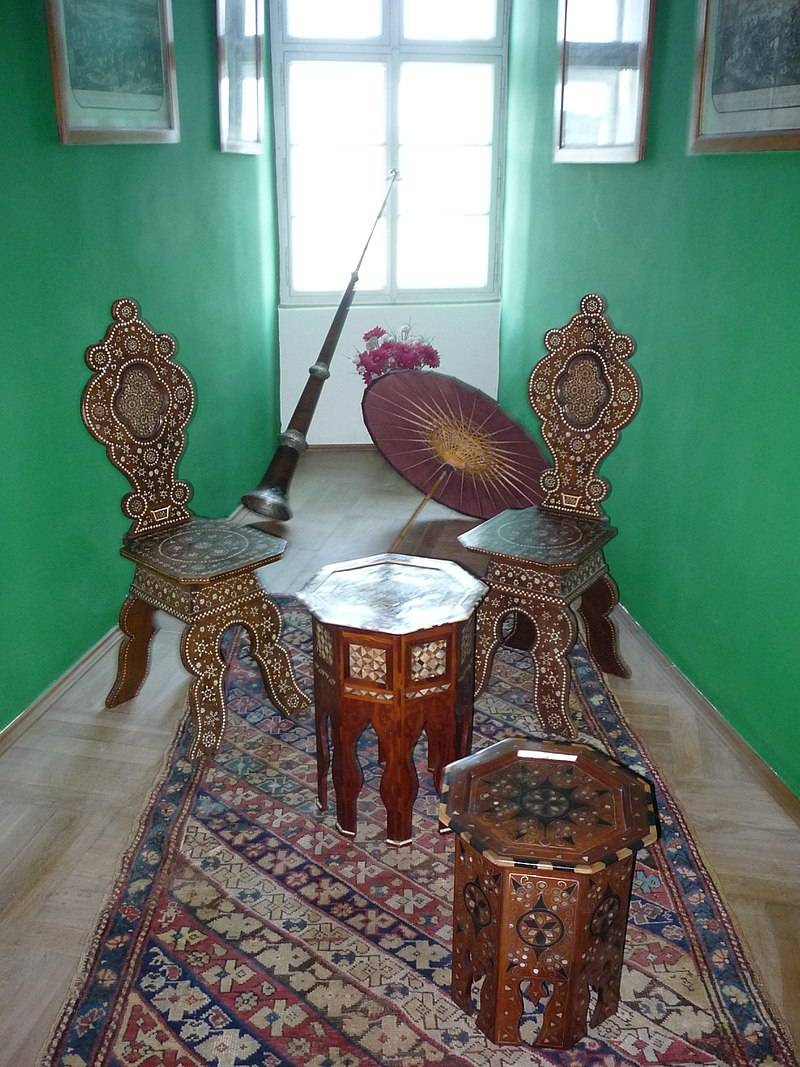
"Eastern Cabinet"
Ladies' salon.
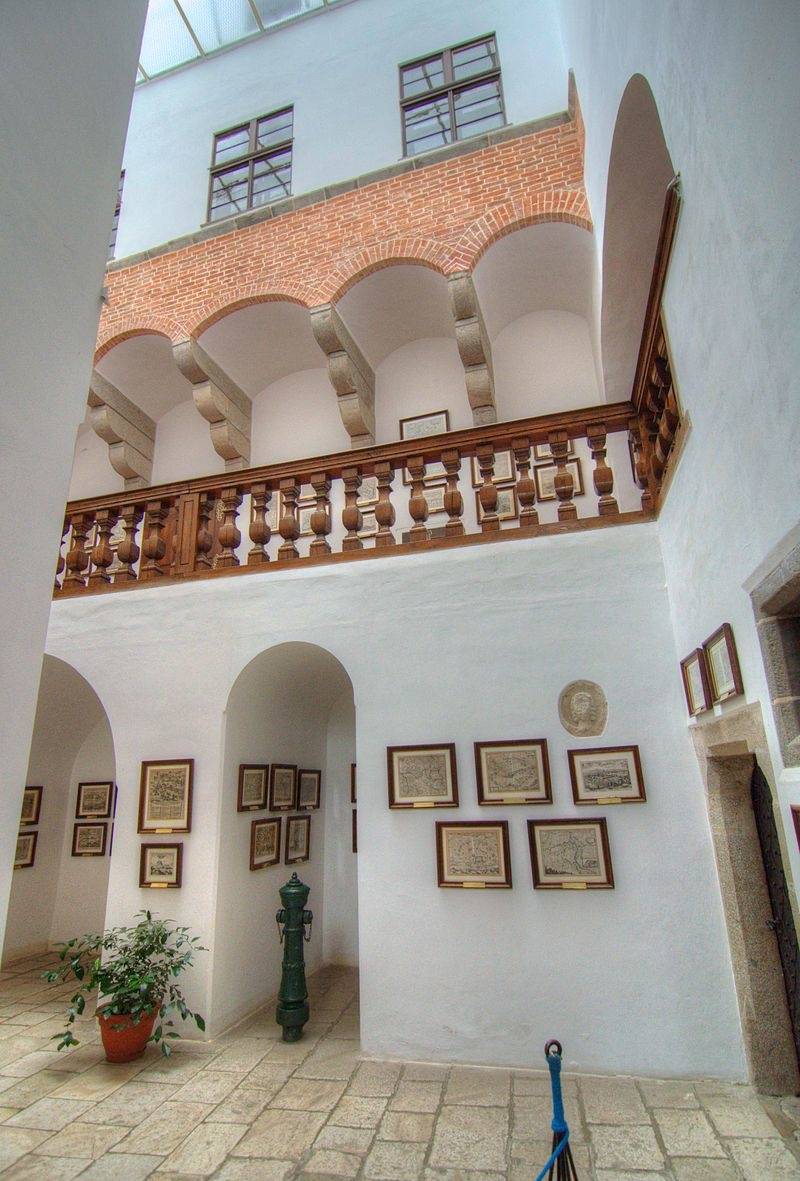
Internal "cold corridor"
It is clear that every self-respecting castle must have either its own cast or its own legend. As for the ghosts in the castle, something did not come together, apparently, none of its owners had strangled their wives and did not bury the walls, but on the other hand, Sternberk Castle has a soul-stirring legend. According to her, one of the graphs, having successfully sold one of his castles, received a fortune for him - one hundred thousand thalers in gold. And so he took part of the gold with him on a journey, and decided to leave part of it in the castle, guarded by a faithful servant, Gineck, appointed manager. Loyalty, of course, the quality is good, but so poor Poor Guinek was worried about the safety of princely gold (by the way, who wouldn't?) That he had lost peace and sleep, and he couldn’t think of anything better than to hide gold in the mountains. And he hid it “with one cold, dark little night!” And then, soon after, he took it, and he fell off his horse and was very badly killed. So much so that he could not speak. Such a God prepared him for an accident on the road. They brought him to the castle, began to read the waste, and he still tried to show the clerk with gestures (there were no more literate people), where he hid the treasure, but only the clerk understood it that way.
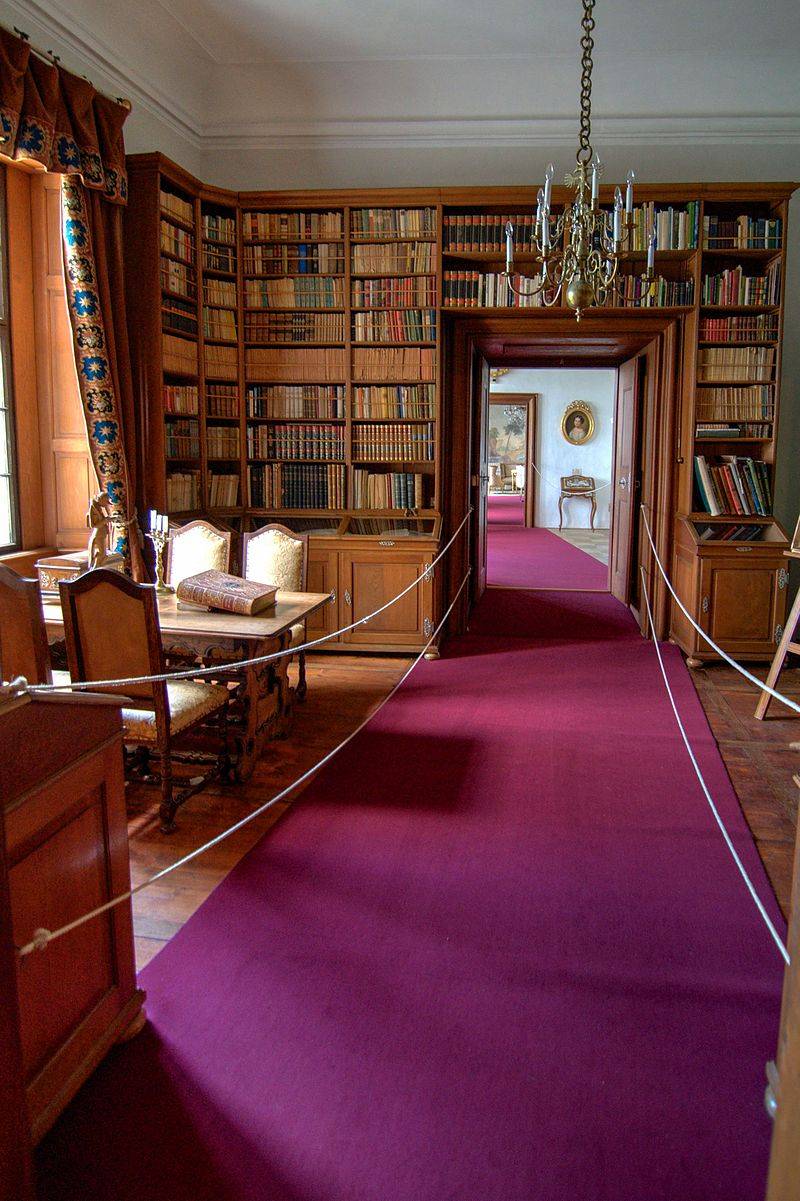
Library
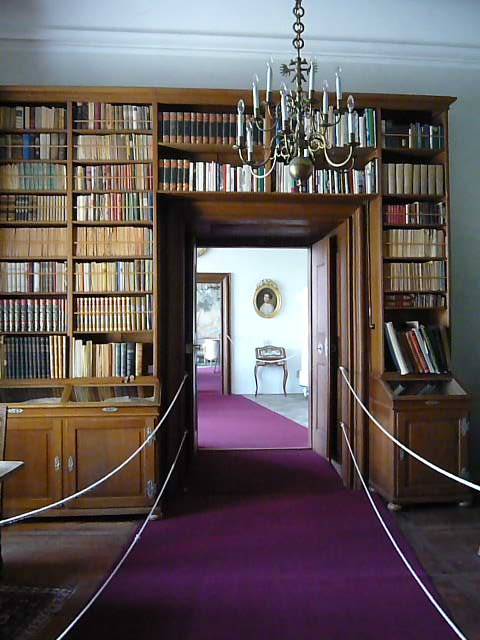
Library (continued)
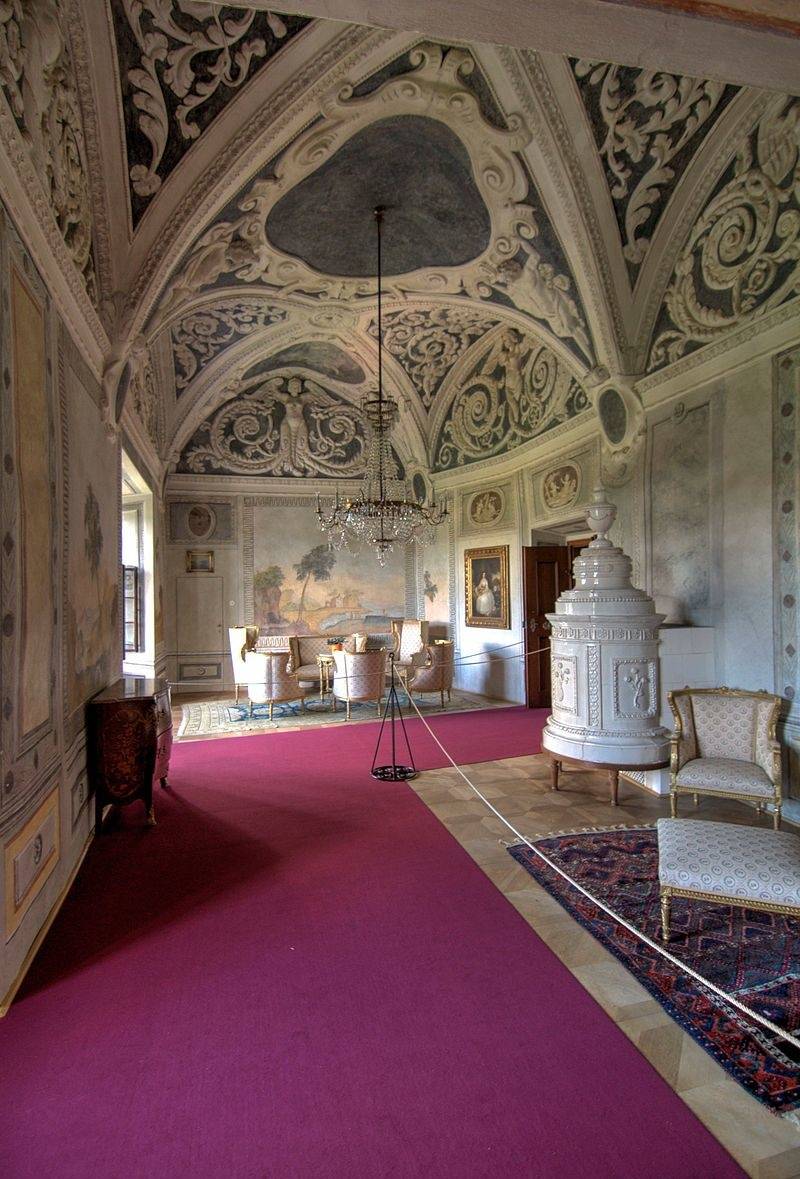
The so-called "Zloty Salon" impresses with its ceilings!
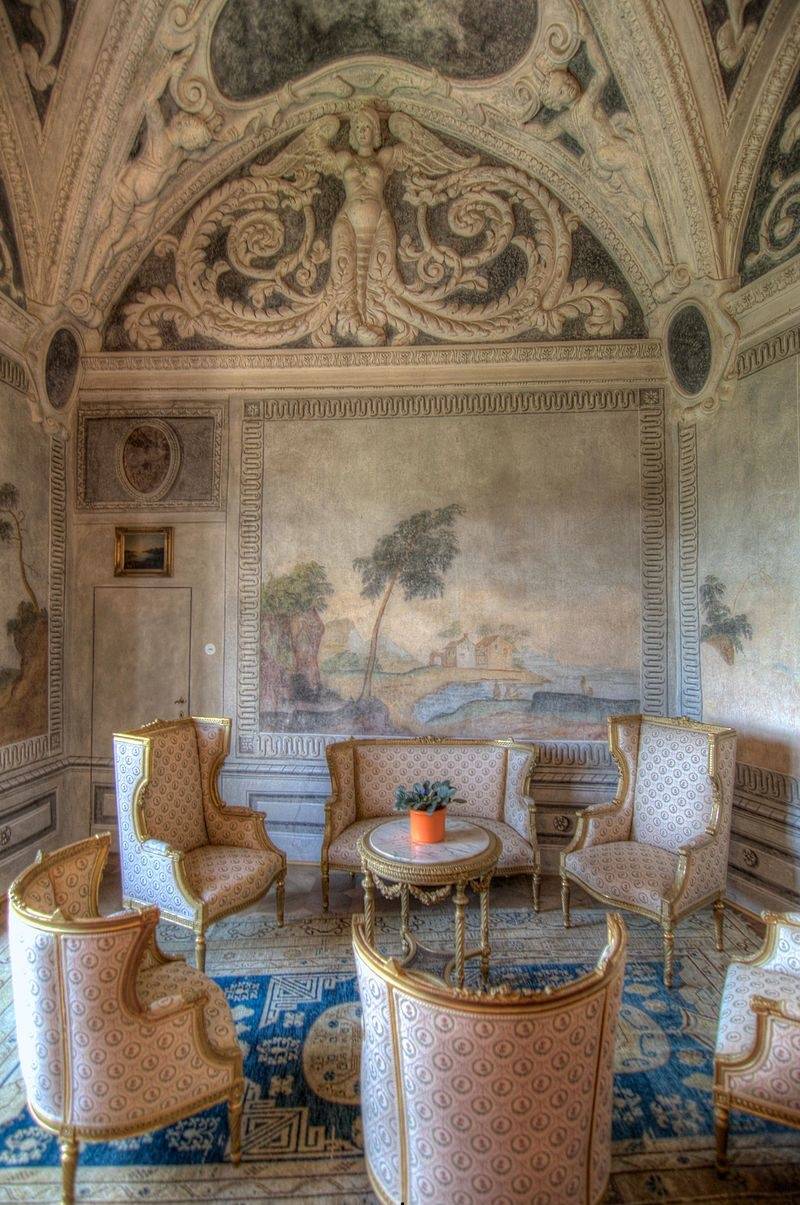
Salon furniture.
And this is a heater. That is, the fire chamber itself was “somewhere out there,” and only hot air was fed into this device.
The prince returned - and there is no money! Oh, he grieved, grieved, servants and interrogated, and threatened them, to all uselessly. And the clerk was honest. He came to the prince and confessed that it was because of his foolishness that he did not understand what the dying Hynek wanted from him. But the prince of the clerk did not punish, and began to look for treasure, the benefit of the people he had enough. They even dug up the surrounding fields, so that it was impossible to sow them - only pits were around, but no treasure was found. And it is quite possible that the medieval gold of Sternberg somewhere in the vicinity of Cesky Sternberk is still, sooner or later someone will find it!
Large dining room
All sorts of weapons in the castle a lot.
Well, if you go to Šternberk - by the way, it’s very difficult to get there, although it is located just a few kilometers from 50 from Prague. There are few direct buses and they are traveling “with all the stops”, so it takes more than two hours to do so, and this is when every minute you have there. It is necessary to go by train with a transfer - that is, all this is still that headache. Therefore, it is best to have an international car license, rent a car and drive a navigator, then it's just 40 minutes. Although it is the most expensive. Again, in the castle, you need to get a group of at least 10 people. Less - but I do not want to wait, all those present add up for the missing. However, even if the tour is conducted in different languages (there is also in Russian, recorded on a tape recorder), its price is quite small and ranges from 4 to 7 euro. That's just really too short - just one hour! But ... the fact that in this castle you can see redeems all these dislocations and expenses.
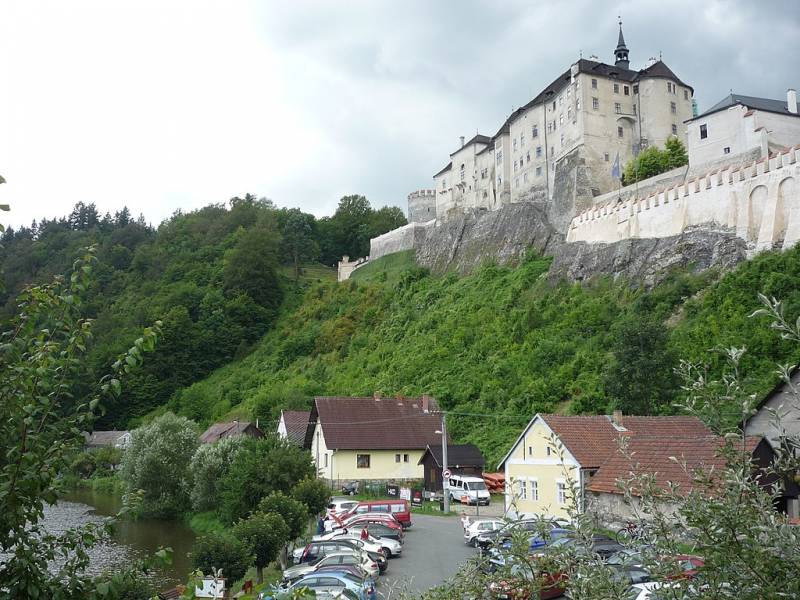
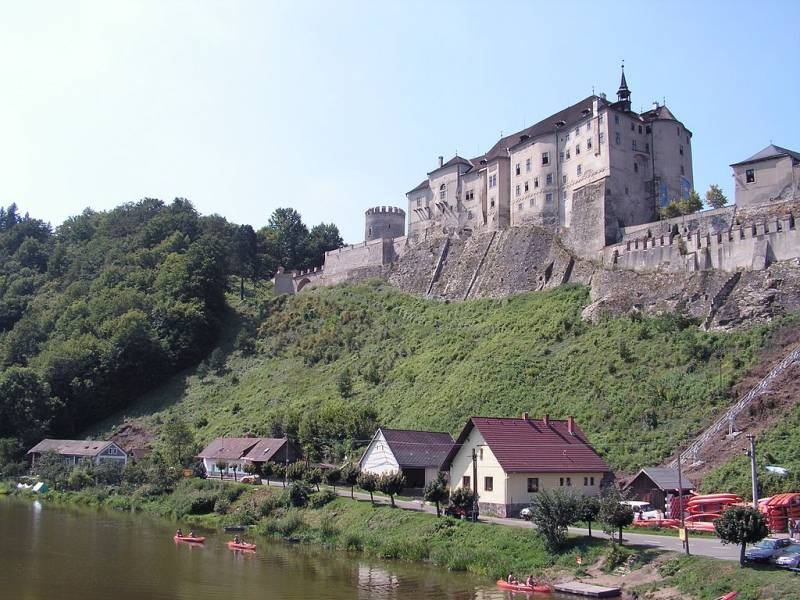
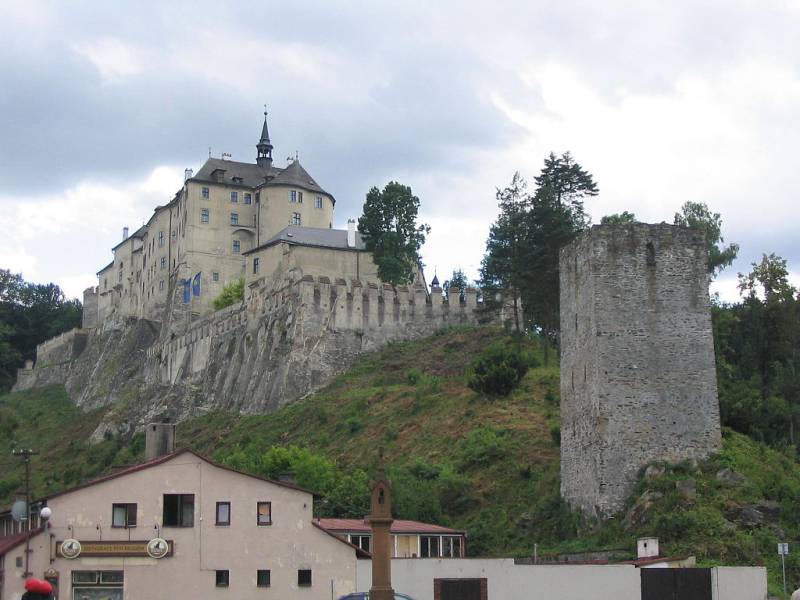
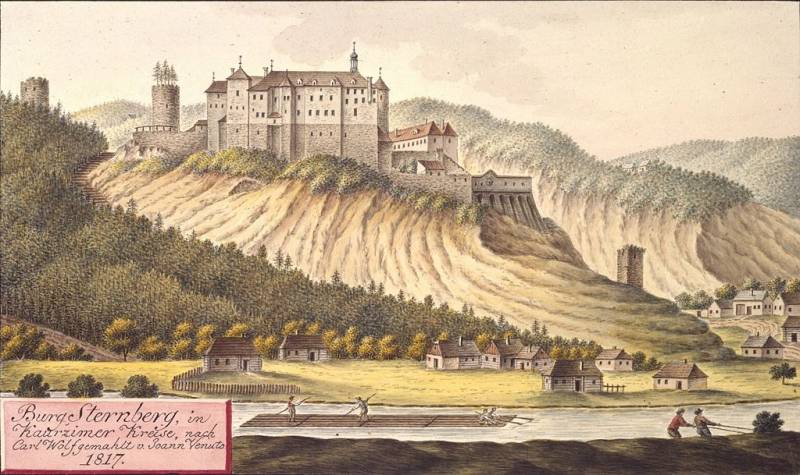
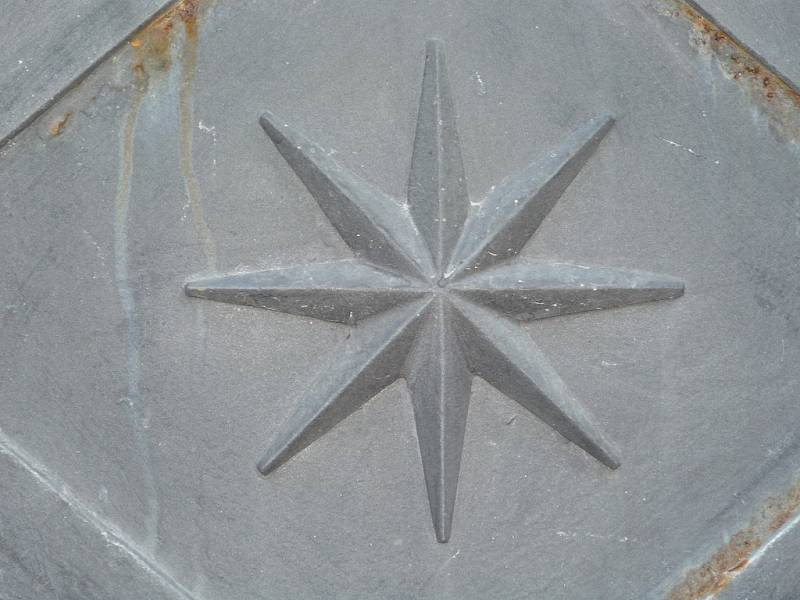
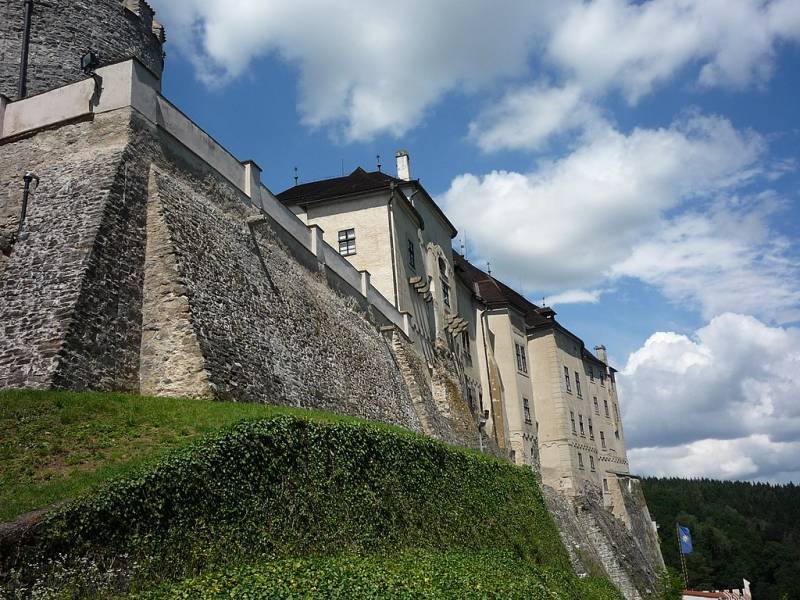
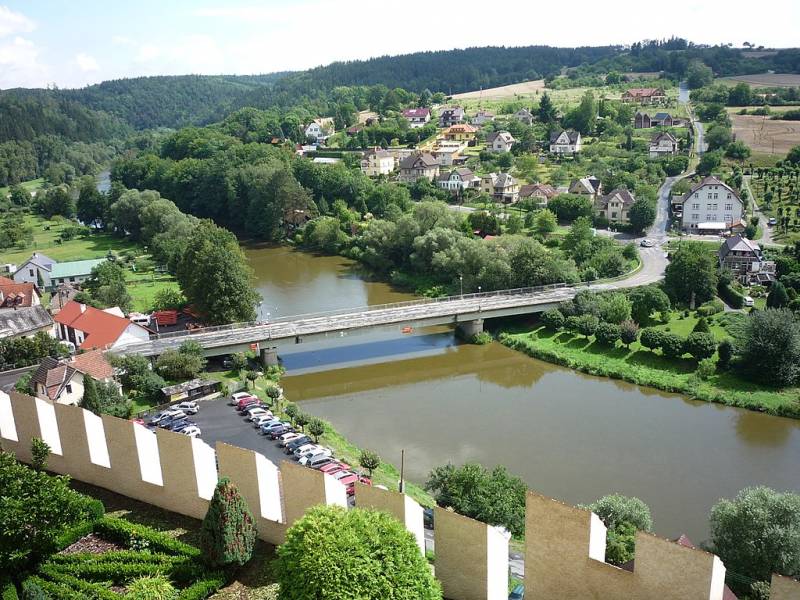
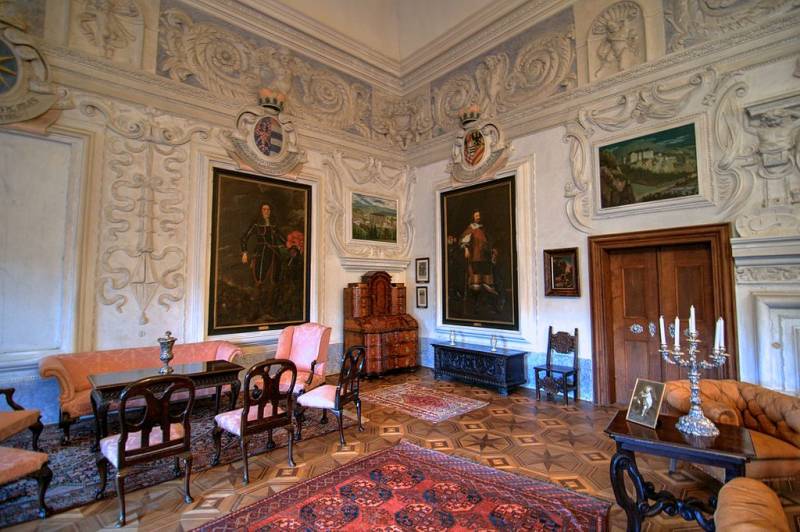
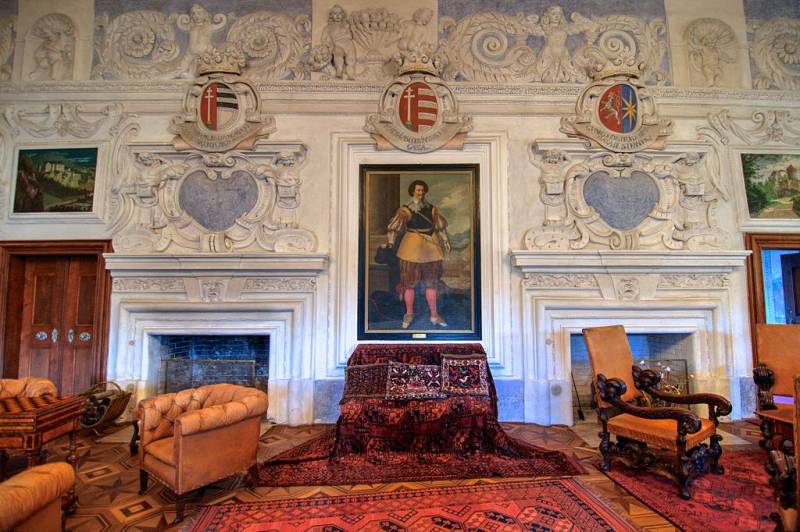
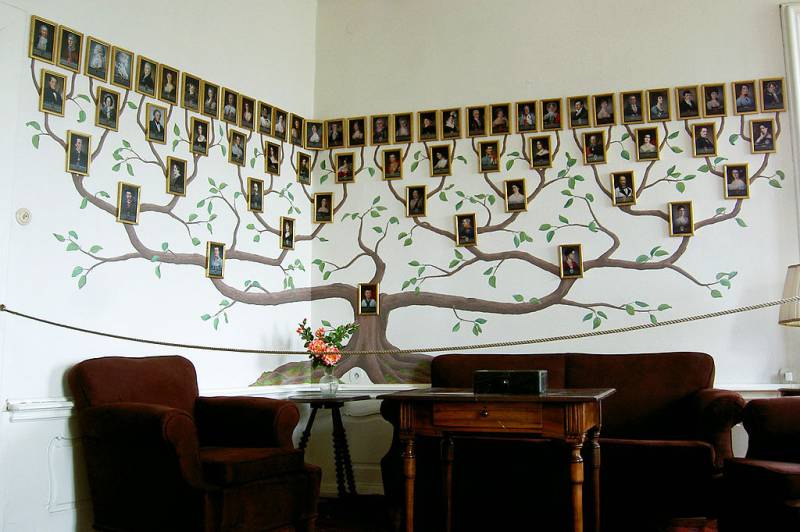
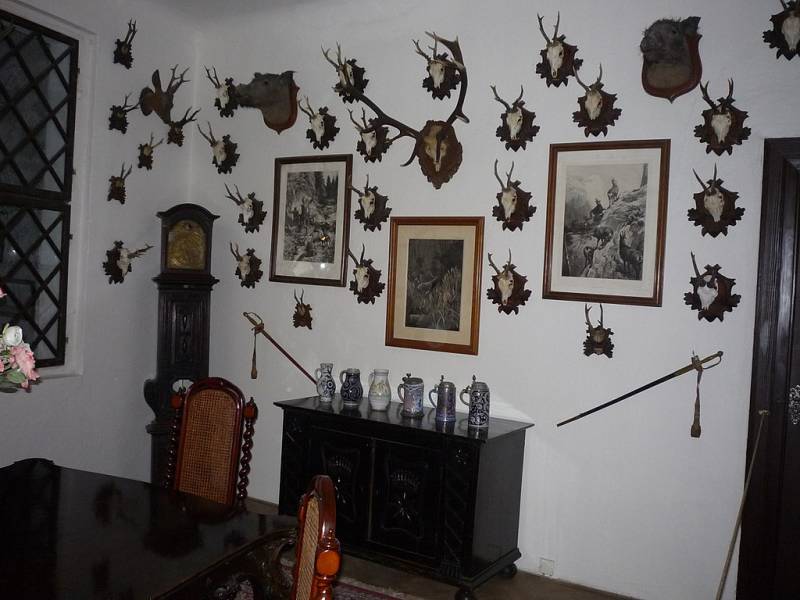
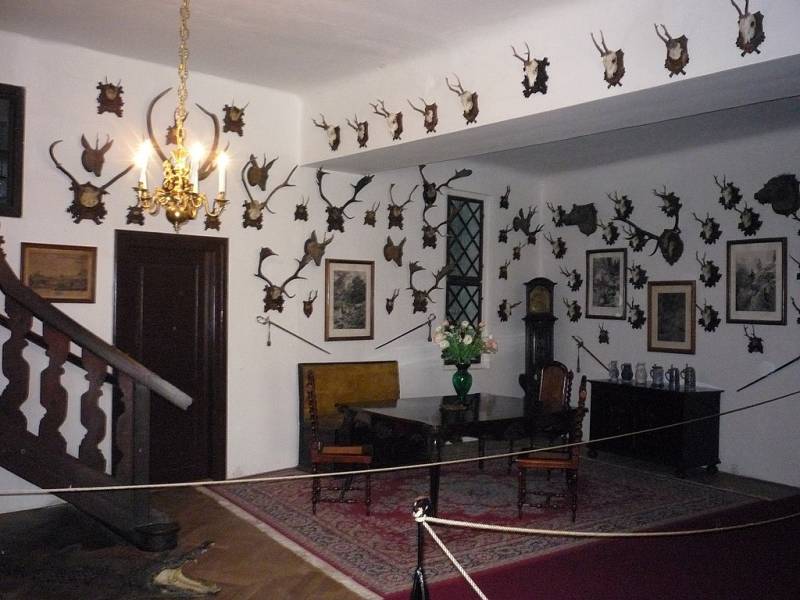
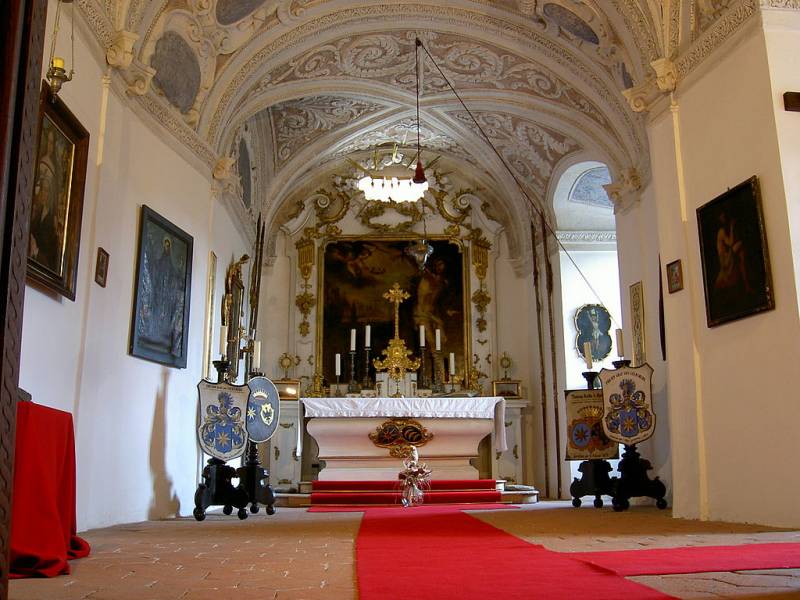
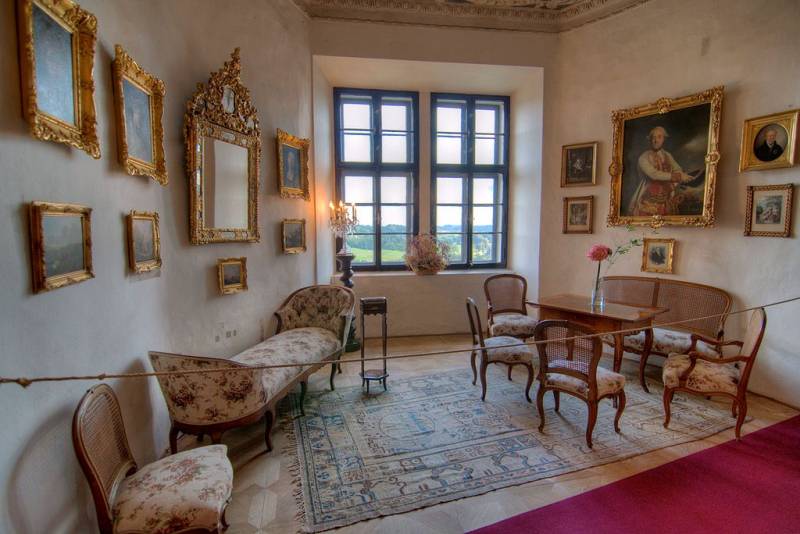
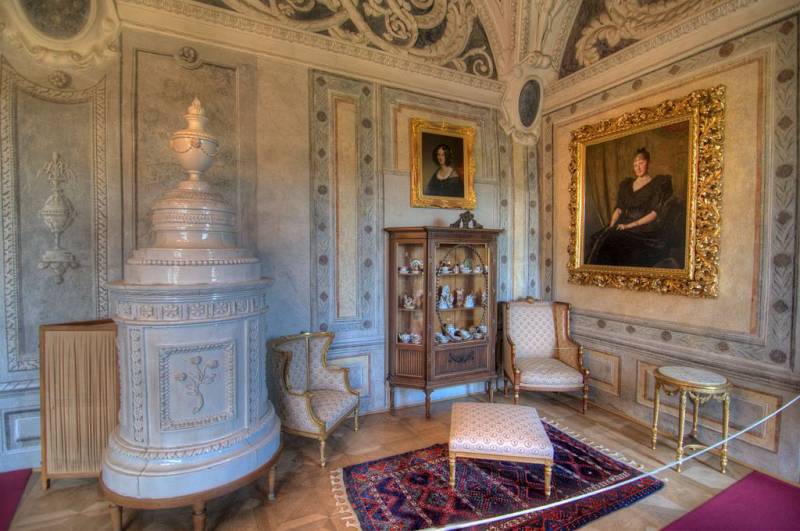
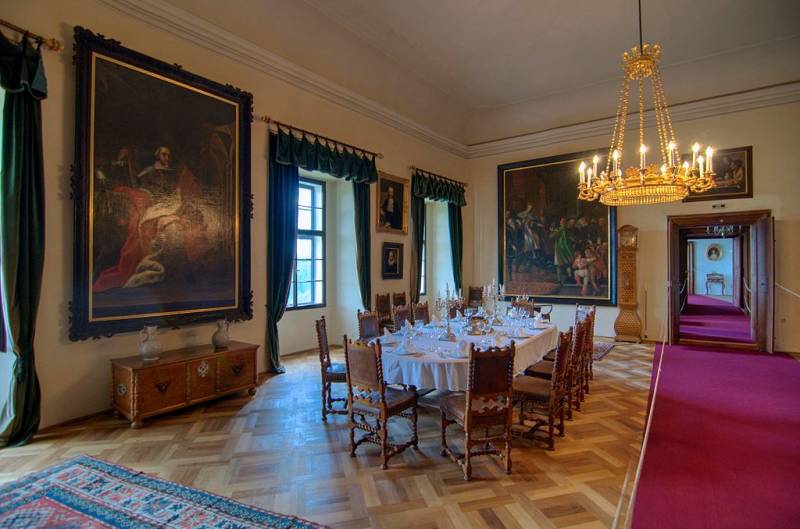
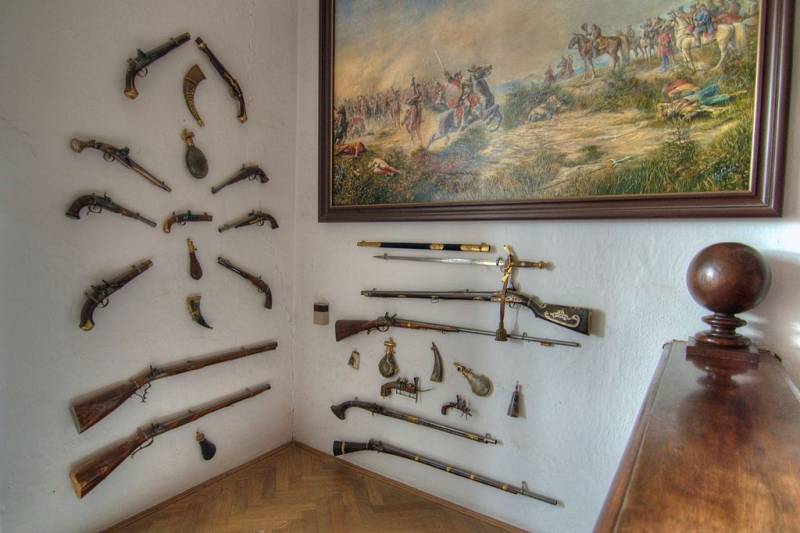
Information